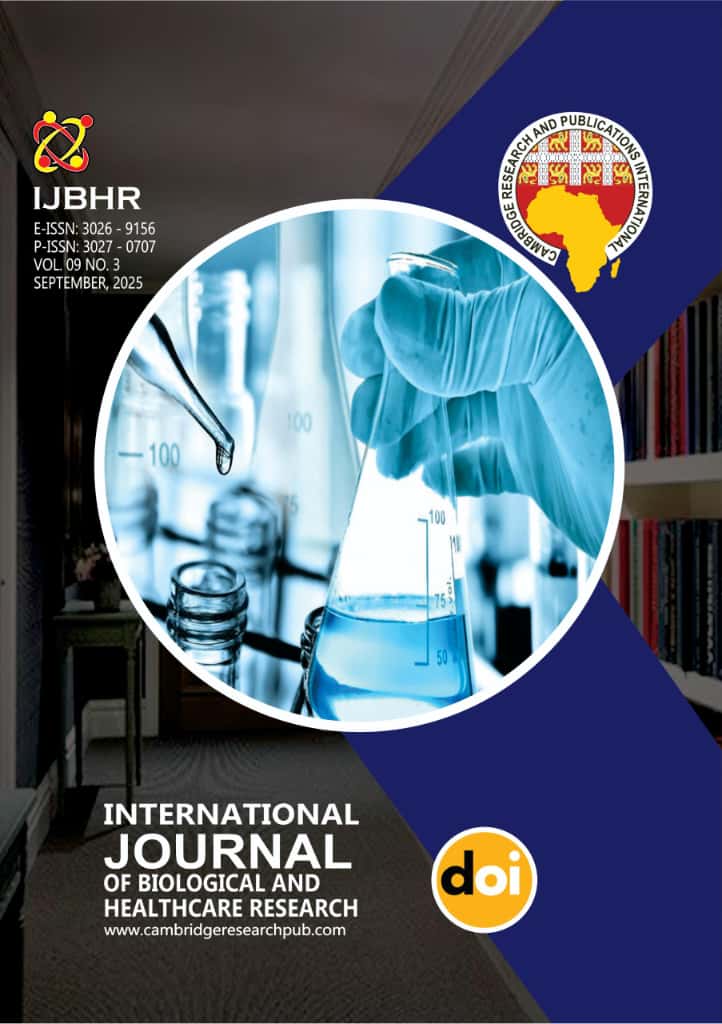PREVALENCE AND DETERMINANTS OF MALNUTRITION AMONG CHILDREN UNDER FIVE IN KARU/NYANYA AREA OF THE FEDERAL CAPITAL TERRITORY (FCT)
Main Article Content
Abstract
Malnutrition contributes heavily to child morbidity and mortality in Nigeria. National surveys give broad estimates, but they do not capture community-level variations. Karu and Nyanya in the Federal Capital Territory are fast-growing peri-urban settlements with overcrowding, low income, and limited access to health services. These conditions create high risk for malnutrition among children under five. The study used a descriptive cross-sectional design in Karu and Nyanya General Hospitals. A total of 355 mother–child pairs were recruited through systematic random sampling. Children aged 6–59 months were assessed using anthropometric measurements, and mothers completed structured questionnaires on sociodemographic data, feeding practices, and child morbidity. Nutritional status was determined with WHO growth standards. Data were analyzed with SPSS version 26.0. Descriptive statistics summarized prevalence, chi-square tests examined associations, and logistic regression identified independent predictors of malnutrition. The prevalence of stunting, wasting, and underweight was 33.2%, 10.7%, and 24.8% respectively. Male children had higher rates of stunting (37.9%) and wasting (12.6%) compared to females. Exclusive breastfeeding was reported by 42.5% of mothers, and 16.9% introduced complementary feeding before four months. Recent diarrhea was reported in 41.1% of children and showed a strong association with malnutrition. Logistic regression revealed that low maternal education (AOR = 2.6, p = 0.003), household income below ₦50,000 (AOR = 3.2, p = 0.001), absence of exclusive breastfeeding (AOR = 2.9, p = 0.002), and recent diarrhea (AOR = 2.1, p = 0.021) were independent predictors. Malnutrition among children under five in Karu and Nyanya is widespread and linked to low income, poor maternal education, suboptimal feeding practices, and recurrent illnesses. Efforts to reduce malnutrition in these peri-urban communities should focus on nutrition education, exclusive breastfeeding promotion, livelihood support for poor households, and improved control of childhood infections.
Downloads
Article Details
Issue
Section

This work is licensed under a Creative Commons Attribution 4.0 International License.




